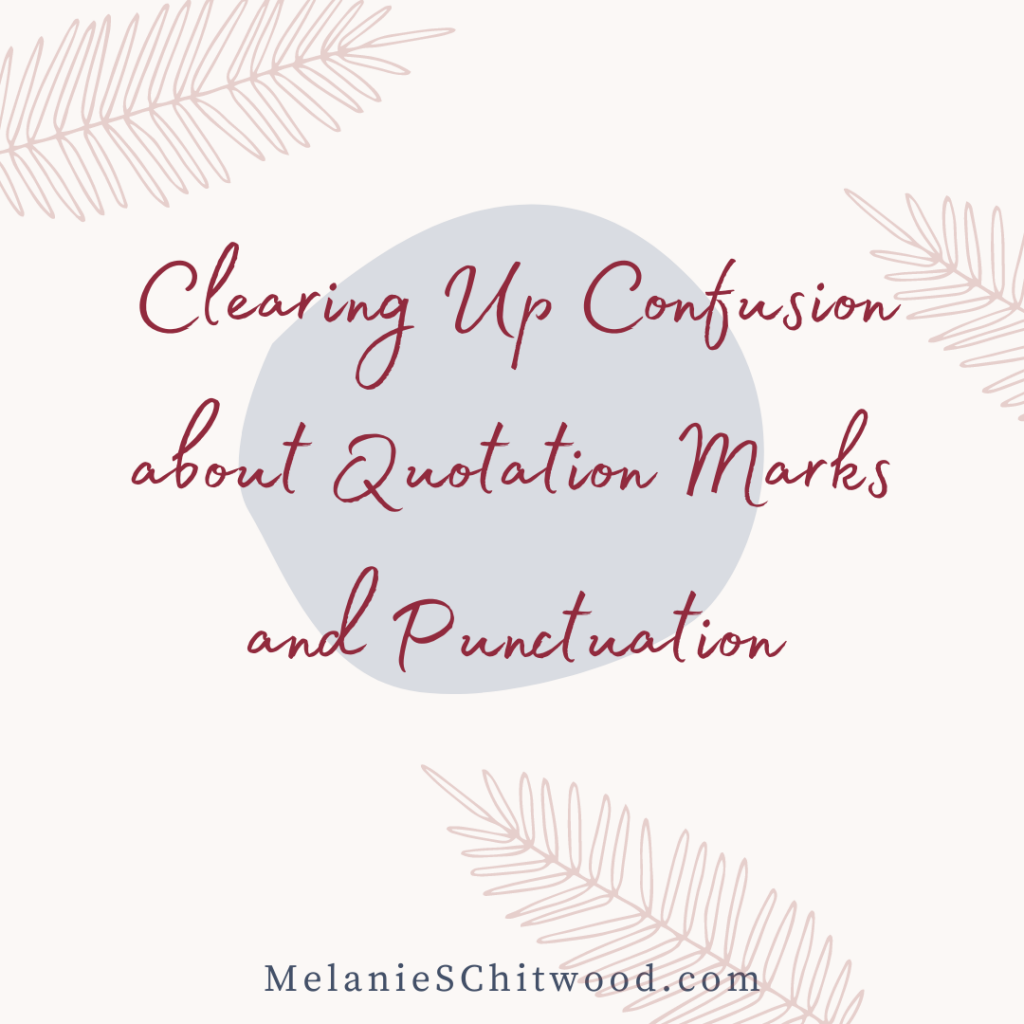Clearing Up Confusion About Quotation Marks and Punctuation
When I am editing, I often see confusion and errors when it comes to where to place punctuation with quotation marks.
So let’s look at some rules.
1. Periods and commas always go inside (or before) quotation marks.
Correct Example:
I often say, “It is what it is.”
Not this: I often say, “It is what it is”.
Correct Examples:
My favorite song is “Amazing Grace.”
“You’re one of the hardest working employees we have,” the boss told his employee.
In 1 Corinthians 13: 13, we read, “But now faith, hope, and love remain, these three; but the greatest of these is love.”
2. Place period after parenthetical documentation.
When you have a Bible quotation and include parenthetical documentation after the verse, then the period goes after the parenthetical documentation.
Correct Example:
We read, “But now faith, hope, and love remain, these three; but the greatest of these is love” (1 Corinthian 13:13).
Not this: We read, “But now faith, hope, and love remain, these three; but the greatest of these is love.” (1 Corinthian 13:13)
(I’ve written a workbook that answers all kinds of question about parenthetical documentation and other details related to using Scripture in your writing. It’s only $7.99 and can be purchased here.)

3. Colons and semicolons
Colons and semicolons go outside (or after) quotation marks.
Correct Example:
I heard the weatherman report, “Today we are expecting torrential downpours”; however, his predictions have proven to be wrong.
4. Exclamation points and question marks
Unless they are part of the original quotation, all other marks, such as exclamation points and question marks, are placed outside the quotation marks.
Correct Example:
Didn’t your teacher say, “If you turn this project in late, you will probably fail”?
The question mark does not belong to the teacher’s statement, so it goes after the entire sentence.
Correct Example:
The hostess asked, “Do you have a reservation?”
In this situation the question mark belongs with the actual question so the question mark goes before the quotation marks.
Punctuation with single and double quotation marks
As Christian writers, we often quote Bible verses in our writing.
If we quote something that’s already in quotation marks, we change the quotation mark to a single quotation mark. This is called single inside double.
The period goes inside (or before) both the single and double quotation mark.
Correct Example:
In John 8:12, we read, “Then Jesus again spoke to them, saying, ‘I am the Light of the world; he who follows Me will not walk in the darkness, but will have the Light of life.'”
I hope this helps!
~Melanie
P. S. For other Writing Tips Blog Posts on punctuation guidelines, go here and here.
Don’t forget about that workbook, How to Use Scripture in Your Writing, that answers all kinds of question about parenthetical documentation and other details related to using Scripture in your writing. It’s only $7.99 and can be purchased here.)





